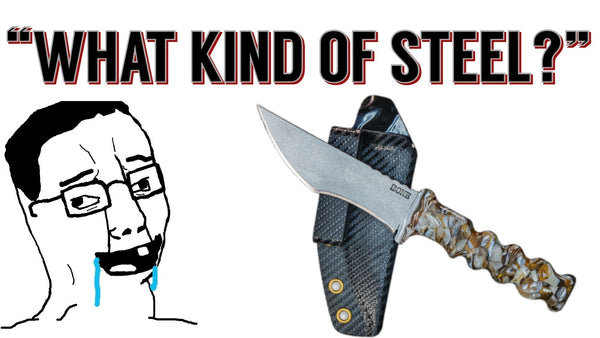A Beginner’s Guide to Buying Knives: Avoiding Common Mistakes
When it comes to buying a knife, here are some best practices I'll share with you so that you'll know how to get the best bang for your hard earned buck. Too often in purchasing a knife, people start with the wrong questions, revealing a lack of knowledge and potentially setting themselves up for disappointment. Here, we’ll cover the essential points to consider so you can make an informed decision and avoid common pitfalls.
Three Questions to Ask Before Buying a Knife
-
Edge Geometry and Intended Use
Edge geometry is the form and angle of the knife’s edge, and it should match the knife’s intended purpose. For example, a thin-edged blade with very acute or concave angles is ideal for fileting fish or skinning small game... but unsuitable for heavy-duty work, chopping, or stabbing. In contrast, a thick, flat or convex grind offers strength and durability but may not lend well to fine slicing. Think about how you plan to use the knife and choose one with an edge geometry suited to that task. -
Design and Practicality
Design goes beyond appearance—it’s about function. Features like ring pommels, jimping, handle materials, ergonomics, tang type, choil, guard, hardware, sheath system, blade shape and blade thickness all serve specific purposes. For instance, a ring pommel might allow secure retention, especially useful if you’re holding something else simultaneously, like a firearm. Always consider whether the design of a knife aligns with its intended function. -
Heat Treatment and Quality Control
Steel quality alone doesn’t determine a knife’s effectiveness; the heat treatment process is essential. Heat treatment involves heating and cooling the blade at specific temperatures and speeds, which determines its hardness and toughness. Skilled knife makers apply customized heat treatment recipes based on steel type, maximizing durability and performance. Without proper heat treatment, even high-end “super steels” won’t perform better than properly heat treated simpler steels like 1095. It should be understood that the heat treat is what brings out the desired properties of a steel. The most expensive steel in the world, improperly heat treated, is a massive waste of money at best. To assure a knife has quality heat treat, a buyer must find a maker they trust... who knows what they're doing, subjects themselves to strict quality control procedures, and does everything in-house.
Why “What Steel Is It?” Is the Wrong First Question
While steel type impacts a knife’s qualities, it’s only part of the equation. The heat treatment, edge geometry, and design are more critical factors in determining how the knife will perform. Instead of focusing on steel type, look for knives with a reputation for quality, made by experts who know how to bring out the best in their materials. An expert knifemaker with his trusted steel type will almost always make a better performing knife than a knifemaker who jumps on trends and is always switching to the newest steel fad. Furthermore, it's just unnecessary to ask about steel type in our modern age, the best knives are available online directly from the maker... where the steel type should be clearly listed.
Materials and Their Importance
Beyond the blade, handle materials matter. For instance, hardwoods like Granadillo or Honduran Rosewood are commonly used because of their inherent beauty, durability, and resistance to splintering. Jute Micarta, properly made, can be one of the strongest and most durable handle materials available. For example; my proprietary Jute Micarta will outlast the knives owner while other handle materials may break, swell, or crack with time and temperature. Each material type has unique strengths and limitations. Selecting the right handle material adds to the knife’s overall longevity and comfort in use.
Conclusion: How to Avoid “Looking Like an Idiot”
To make a smart knife purchase, think beyond the obvious. Avoid starting with “What steel is it?” and instead focus on whether the edge geometry, design, and heat treatment suit your needs. By understanding these aspects, you’ll choose a knife that not only looks good but also performs effectively for your intended purposes.



